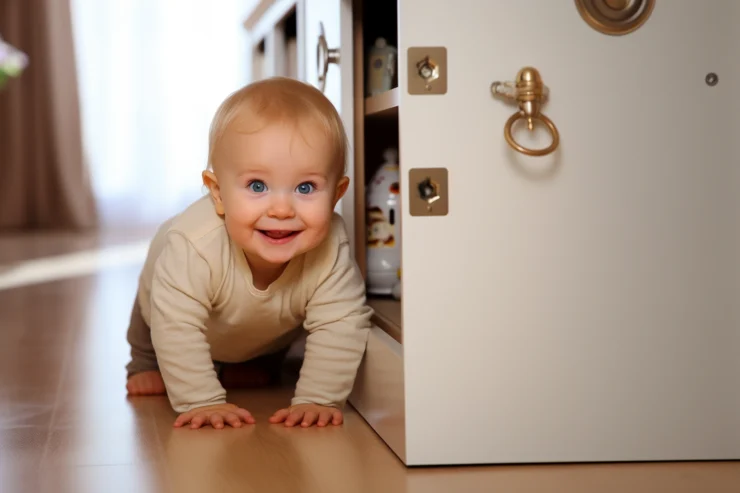Ensuring a safe and secure environment for children is a primary concern for parents and caregivers. A well-childproofed home not only prevents accidents but also fosters an atmosphere of trust and exploration. In this essay, we will explore the best practices for making your home a haven of safety for kids, allowing them the freedom to learn, grow, and play without unnecessary risks.
Thorough Childproofing Assessment
Conduct a comprehensive assessment of your home, identifying potential hazards. Consider the age and developmental stage of your child, as different age groups have varying needs and risks.
Install Safety Gates and Locks
- Place safety gates at the top and bottom of staircases to prevent falls.
- Install locks on cabinets and drawers that contain hazardous items, such as cleaning supplies and sharp objects.
Safe Sleep Practices
- Ensure the crib meets safety standards with a firm mattress and no soft bedding.
- Place the crib away from windows, cords, and potential falling hazards.
Kitchen Safety Measures
- Use stove knob covers to prevent accidental burns or fires.
- Keep sharp objects and breakable items out of reach.
- Store small items, like magnets, away from young children.
Bathroom Safety Guidelines
- Install nonslip mats in the bathtub to prevent slips.
- Adjust the water heater to maintain a safe water temperature.
- Store medications, cleaning products, and personal care items securely.
Window Safety Precautions
- Install window guards to prevent falls from elevated windows.
- Use cordless window coverings or secure cords out of reach to prevent strangulation.
Rug and Carpet Safety
- Use non-slip mats under rugs to prevent slips and falls.
- Secure carpets to the floor to avoid tripping hazards.
Fire Safety Protocols
- Install smoke detectors in key areas and regularly check their functionality.
- Keep fire extinguishers in easily accessible locations, especially in the kitchen.
- Develop and practice a family fire escape plan.
Outdoor Area Security
- Install fencing around pools and bodies of water.
- Regularly inspect and maintain playground equipment for safety.
- Store outdoor tools and equipment securely.
Secure Heavy Furniture
- Anchor heavy furniture to the wall to prevent tipping.
- Place heavy or breakable items on lower shelves to minimize risks.
Supervision and Education
- Supervise children, especially in potentially hazardous areas.
- Educate older children about potential risks and safety rules within the house.
In conclusion, creating a haven of safety for kids involves a proactive and comprehensive approach. By implementing these best practices, you not only minimize potential risks but also cultivate an environment where children can thrive, explore, and learn with confidence. Childproofing is an ongoing process, so stay vigilant, adapt as your child grows, and enjoy the peace of mind that comes with knowing your home is a safe and secure space for your family.
SAFETY FIRST, ADVENTURE ALWAYS































